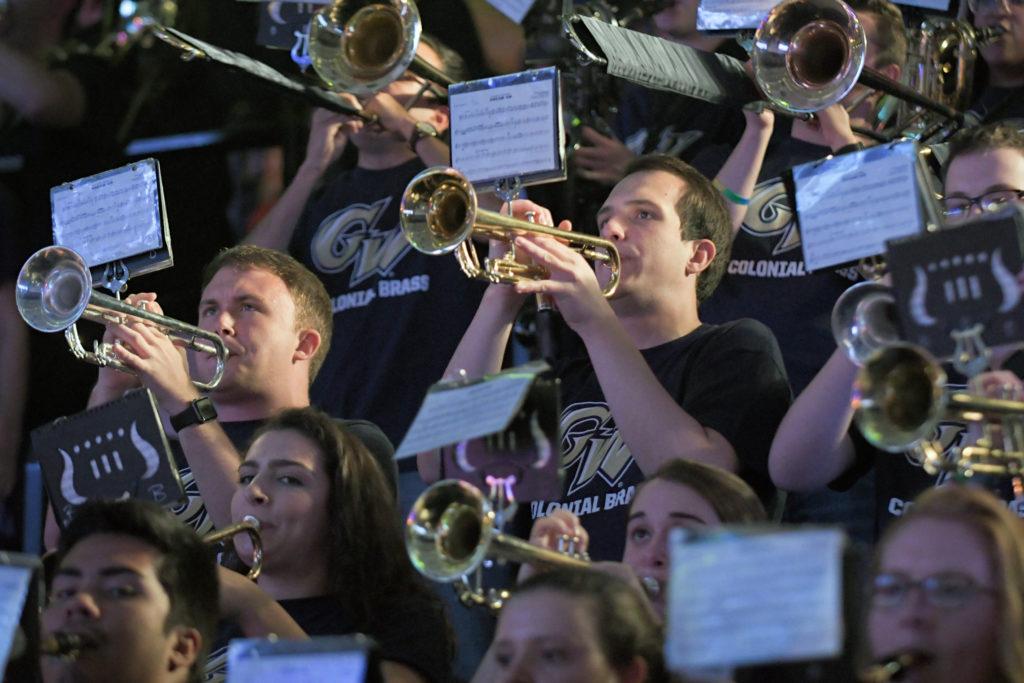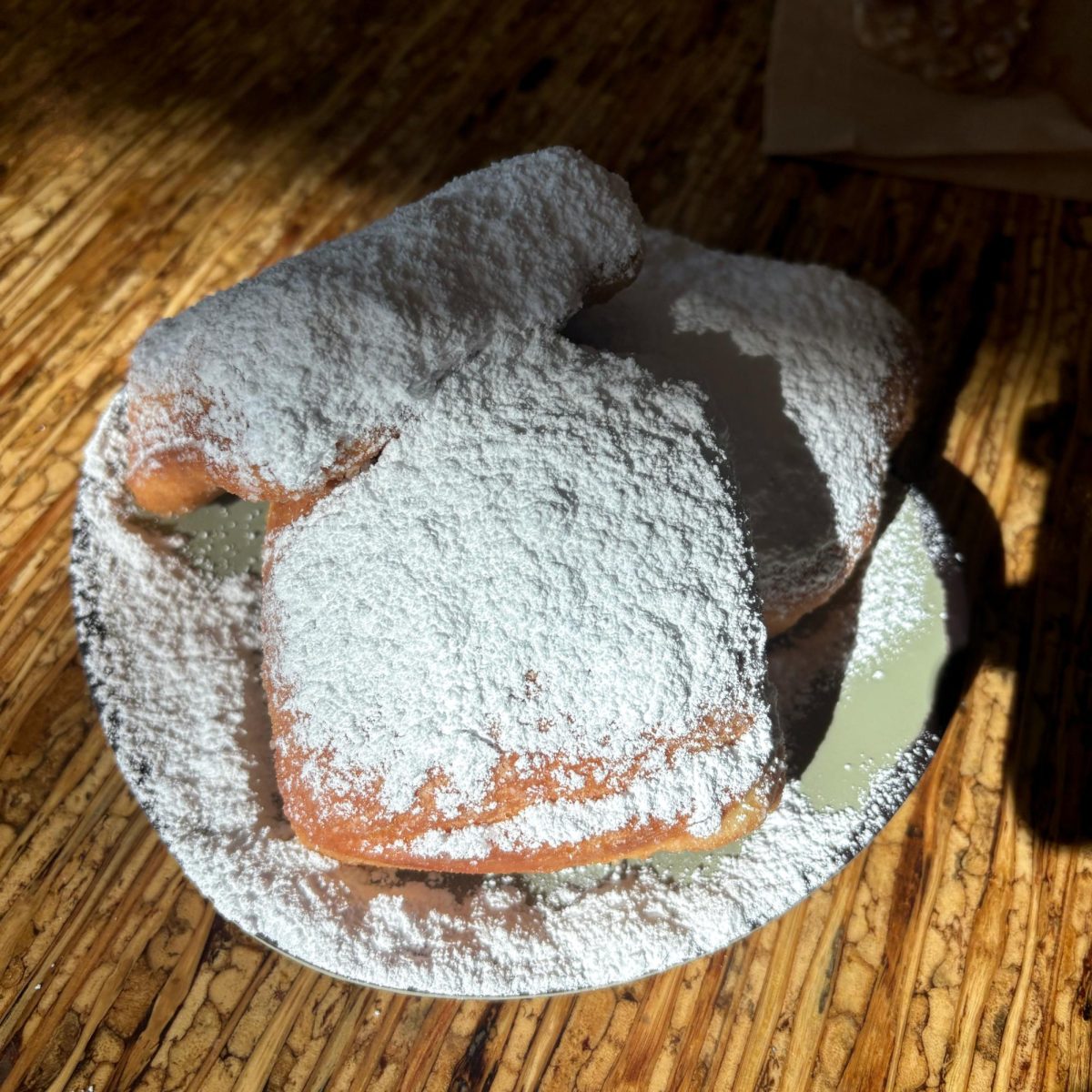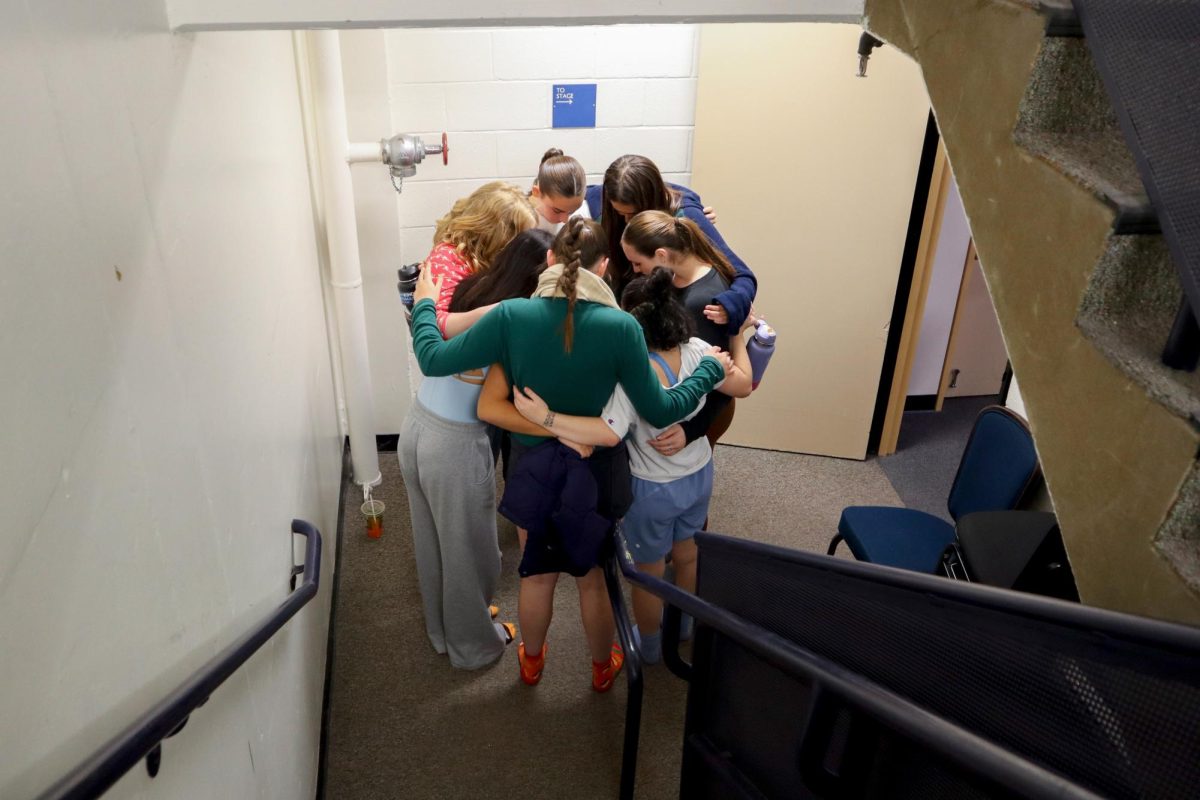A pregame workout isn’t the same without audio pumping into the eardrums, and student-athletes know this musical rush better than anyone.
On the sidelines in the Smith Center, a crew of music makers work together to provide the soundtrack during sporting events. In preparation for the upcoming basketball season, we sat down with musicians to find out what it takes to energize athletes and pump up a crowd.
‘I know how it feels to be there and want to get into the zone’
Dior Toney, a former walk-on guard on the men’s basketball team who graduated in 2006, is known as DJ Dior and is the man behind the music blasting through the speakers. Toney is responsible for playing recorded music at basketball and volleyball games, and got his start as a jockey while working at the now-defunct bar, McFadden’s.
“It used to be really rocking in here,” he said. “I was pretty much the energy on the bench, so I wanted it to get back to that because when I would come to the games it didn’t have as much of the same energy.”
Student-athletes have their own individual tastes, Toney said, so he shows up two hours before the game to play their favorite songs. The women’s basketball and volleyball teams are more likely to let “poppy songs” slip by, while the men’s basketball team is more stingy with their song picks, he said.
“I try to keep my ear to the streets and hear what the students want to hear, so I can make it a fun experience for everybody,” he said.
He said the newer hip-hop songs that get the men’s basketball team focused are not always crowd-pleasers like classic rock tunes “We Will Rock You” or “I’m A Believer,” so Toney gets those songs out of his system early on in the day.
“I can get out all the songs that I usually can’t play during the games, so that I can please them and that way they can get in their zone,” Toney said. “Once they open the doors, I can make it more family-friendly, you know.”
Having been a student-athlete himself, Toney said he understands how much music can mean to the players.
“It’s familiar experience,” he said. “I know how it feels to be there and want to get into the zone and also to have certain songs that really get you going.”
‘The audience has to recognize the songs’
Charles Cevallos, an assistant events and performance coordinator in the music department, was a conductor for Colonial Brass in 2017 during his final undergraduate year. Cevallos said the breakdown of Colonial Brass’ music selections during his tenure was a mix of classic rock tunes from the ‘70s and ‘80s to more recent throwbacks of late ‘00s to last decade’s pop music.
The pep band’s catalog consists of industry-produced stock arrangements and melodies set by students that are unique. Common tunes include Taylor Swift’s “I Knew You Were Trouble,” Rihanna’s “Disturbia” and Beyonce’s “Crazy in Love,” characterized by melodic vocal lines, a driving beat and a repetitive post-chorus that establishes “tension, buildup and release,” he said.
He said commercial music has recently adopted a “sing-rapping” melody used by artists like Ariana Grande that makes it difficult for new tunes to translate into band-friendly arrangements without a singer.
“The audience has to recognize the songs by how they sound, so if you’re playing E-flat the entire time, they’re not instantly gonna pull it out just from the rhythm alone,” he said.
‘They have to see that you’re fans too’
Connor Bryant, a senior studying international affairs and economics and the conductor of Colonial Brass, said he has to be ready to play the high-energy pieces during game time while staying loud and “anchored in the beat.”
He said one of the band’s go-tos is the White Stripes’ “Seven Nation Army,” which has a jumping bass line that is instantly recognizable.
“It’s loud and it drives, and it really wants to make you get up and go,” he said.
Bryant said in a traditional music performance, there is a “90 percent” investment on musicality, which involves staying on pitch and blending with the orchestra. But with a pep band, he said, performance is given precedence over perfect playing.
“People need to look at you and they need to see that you are into it,” Bryant said. “They can’t look at you and think, ‘oh that could be some musicians they hired off of the street.’ They have to see that you’re fans too.”




